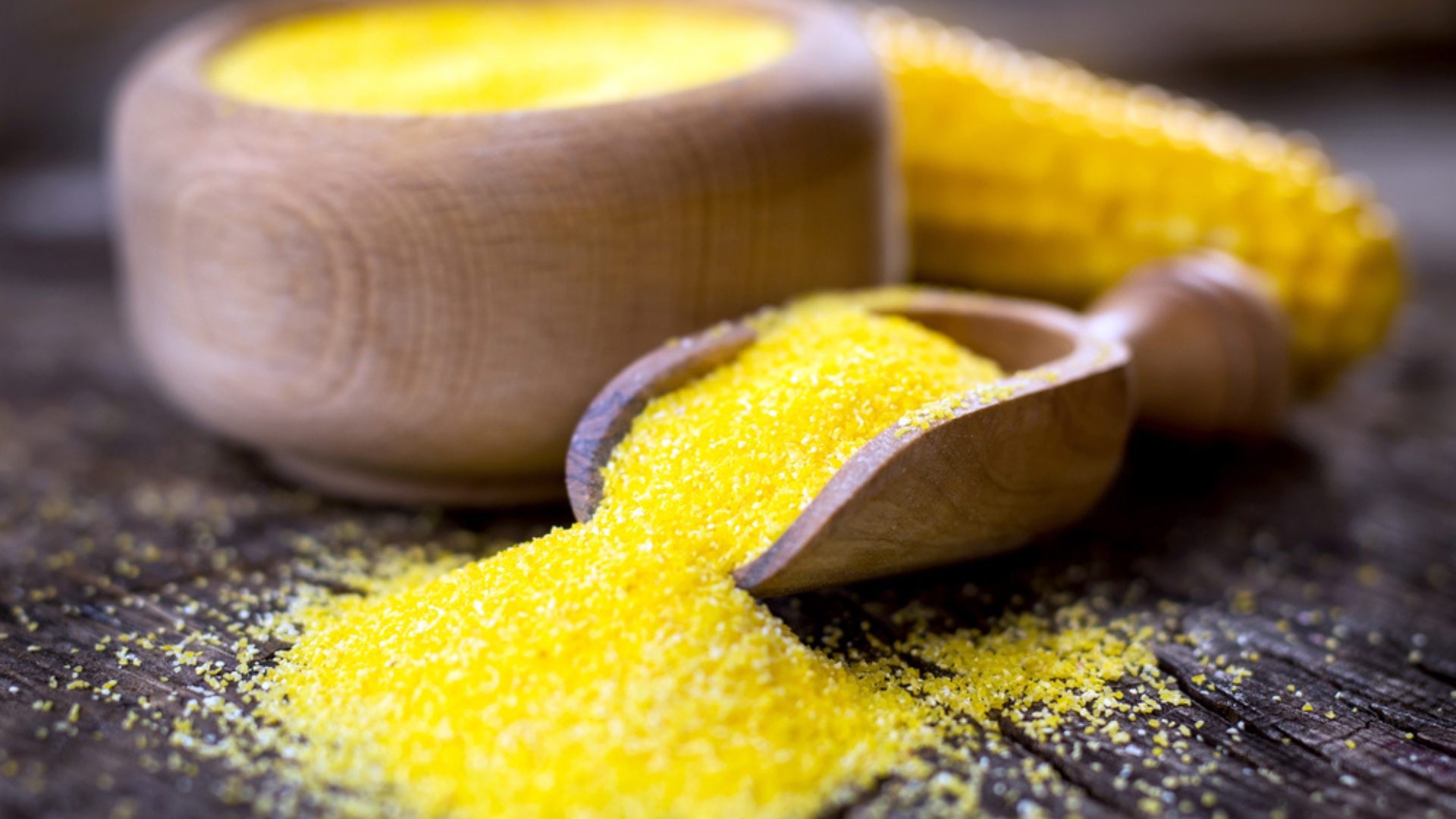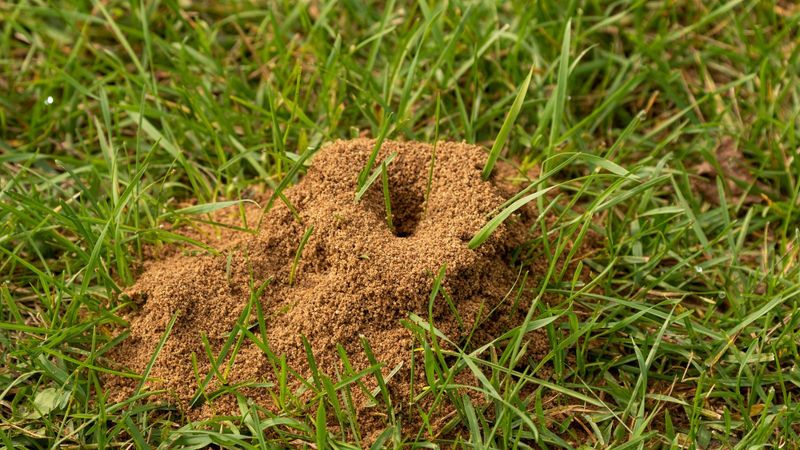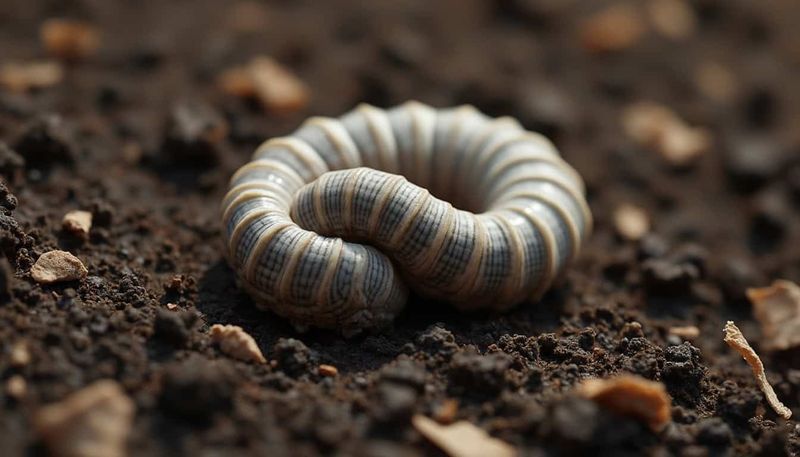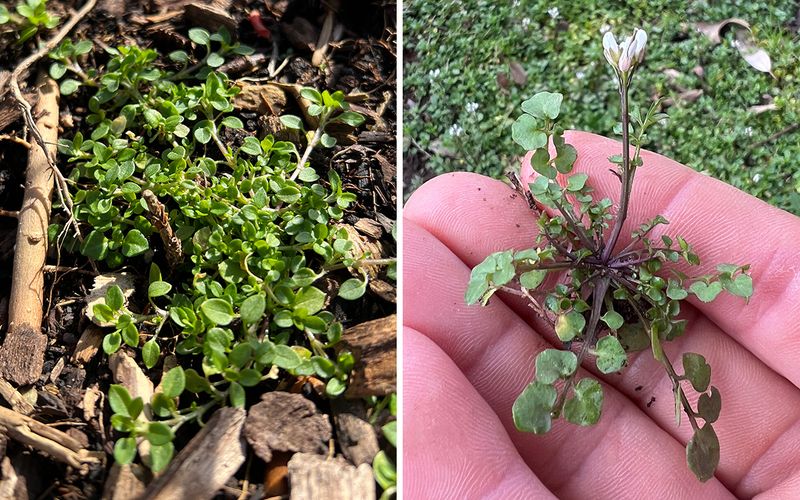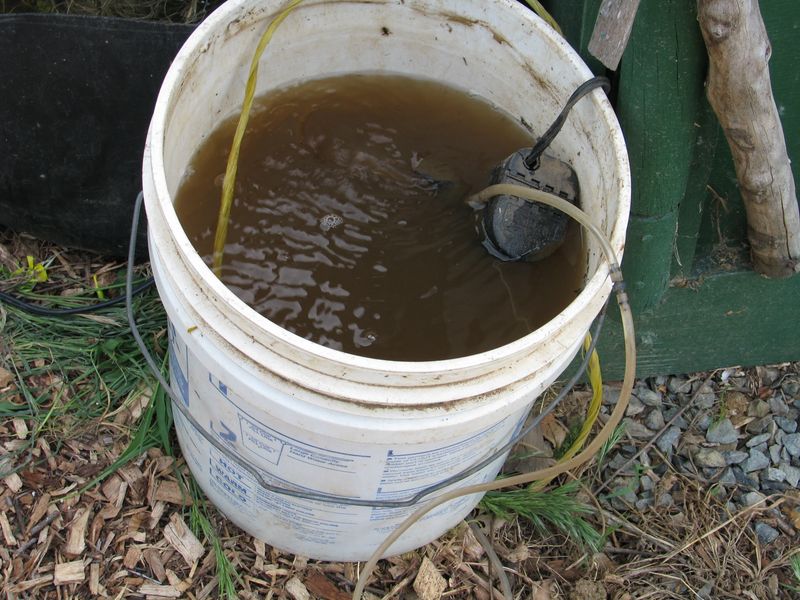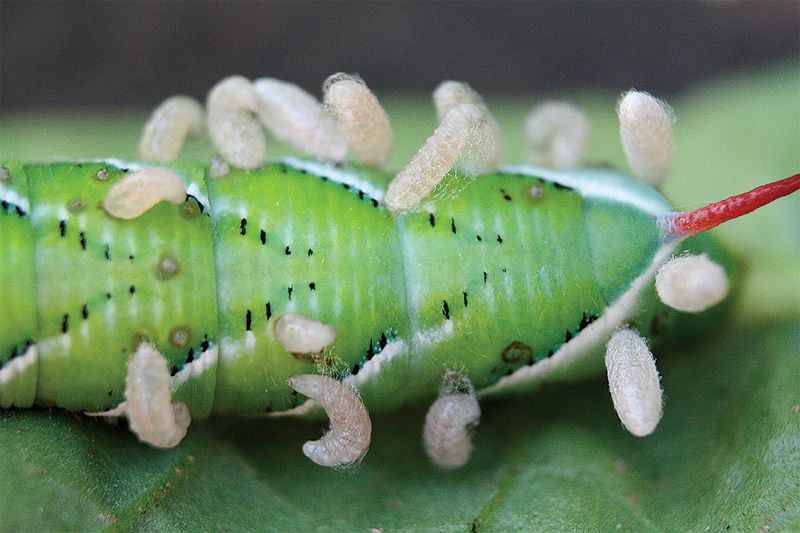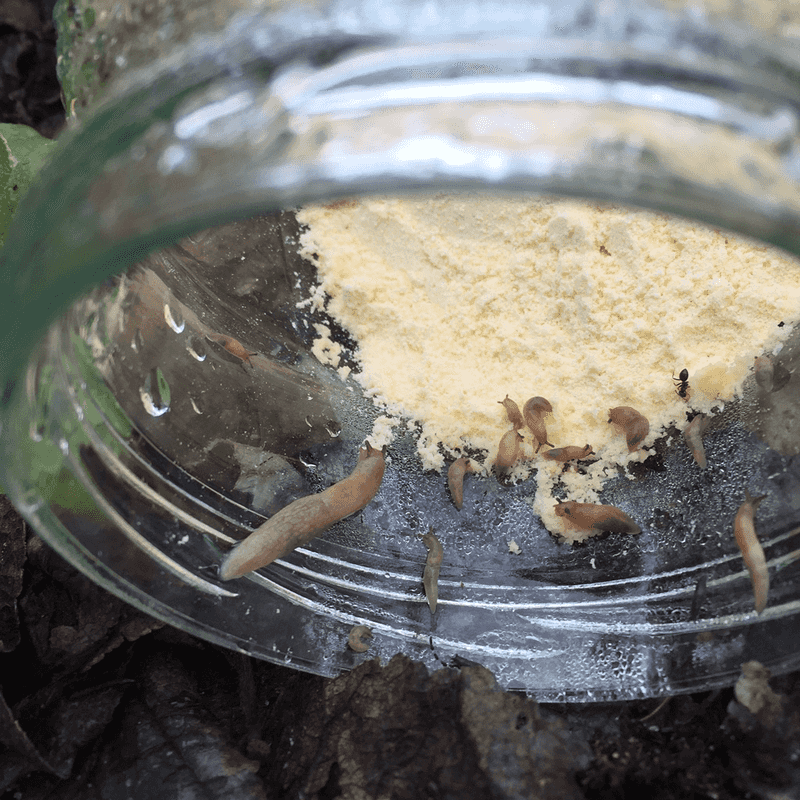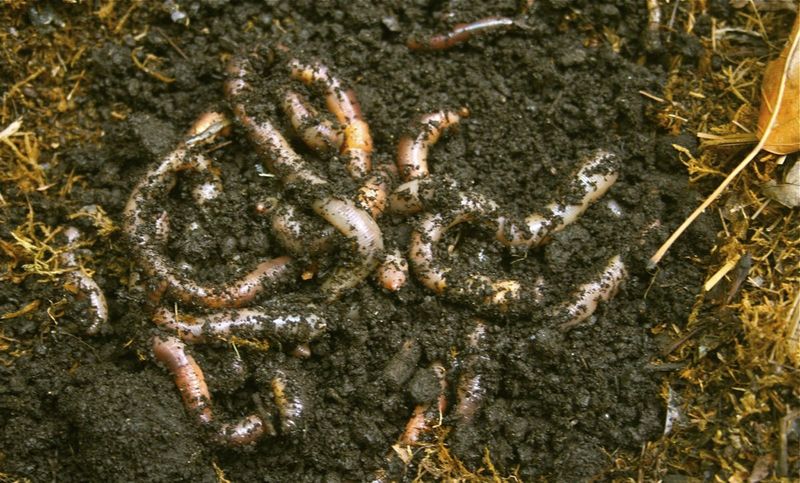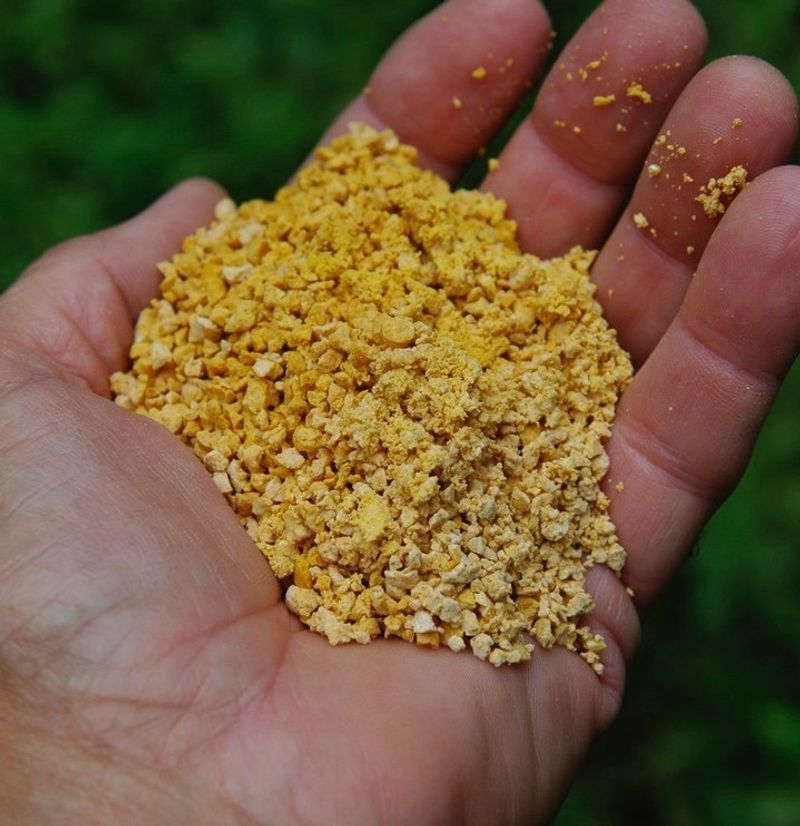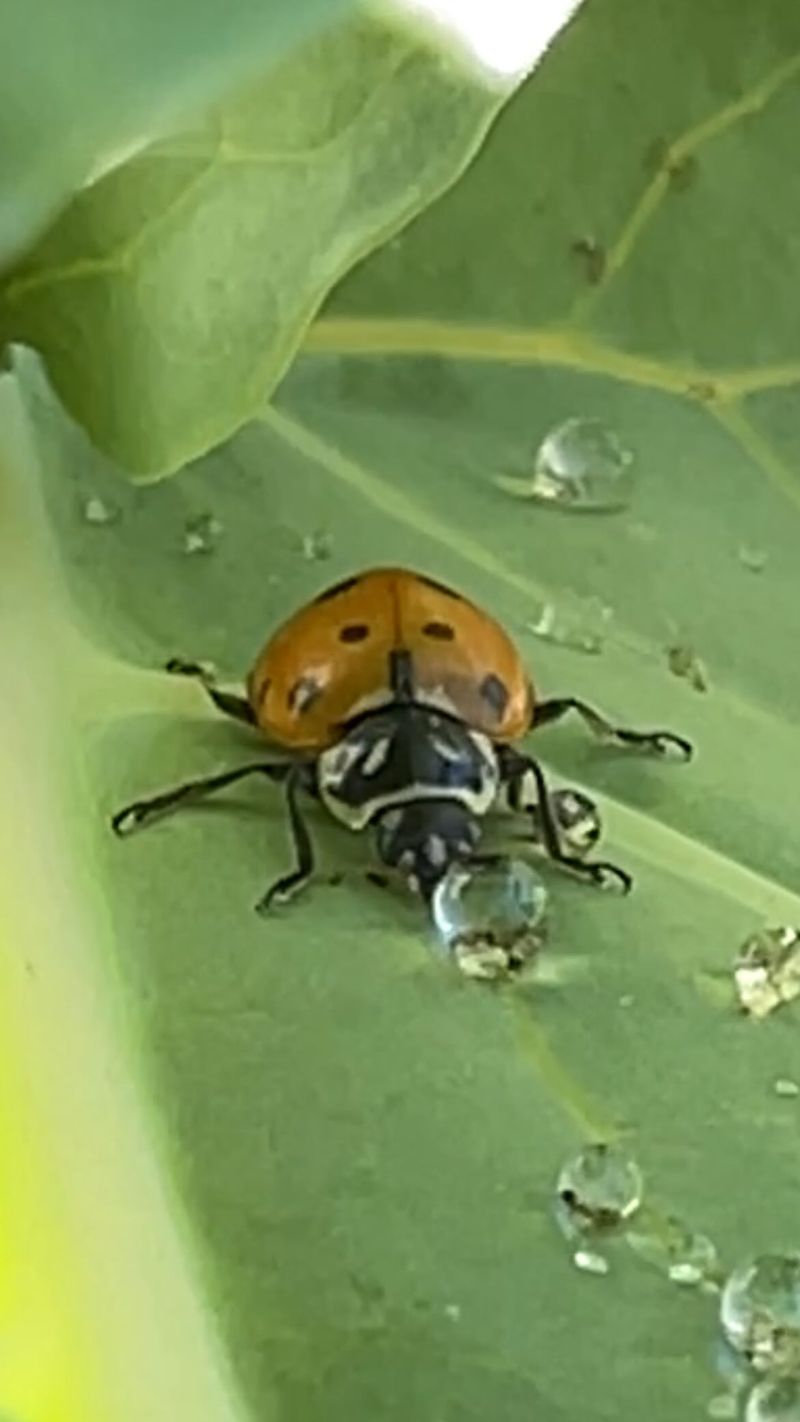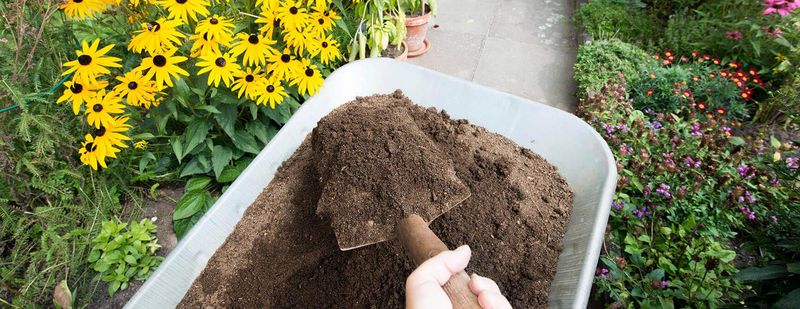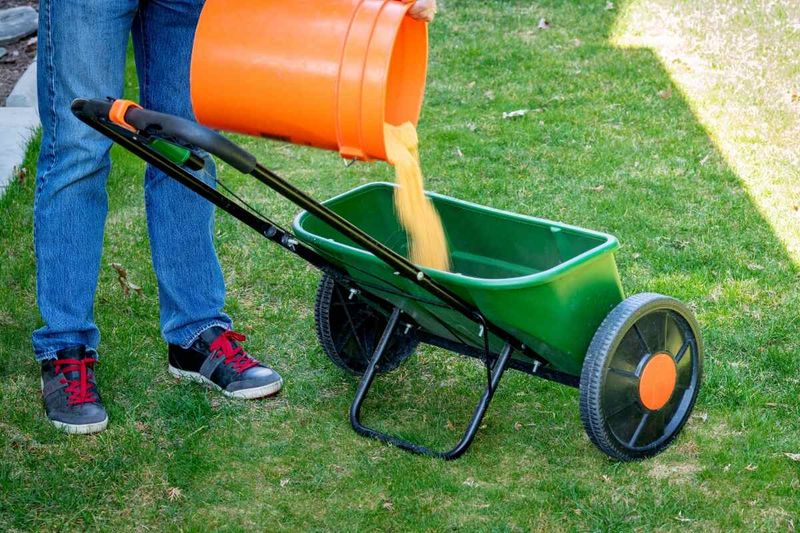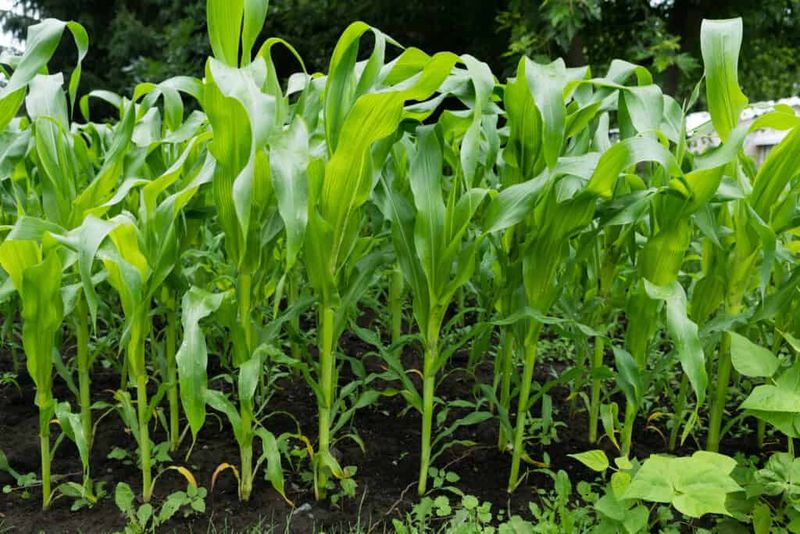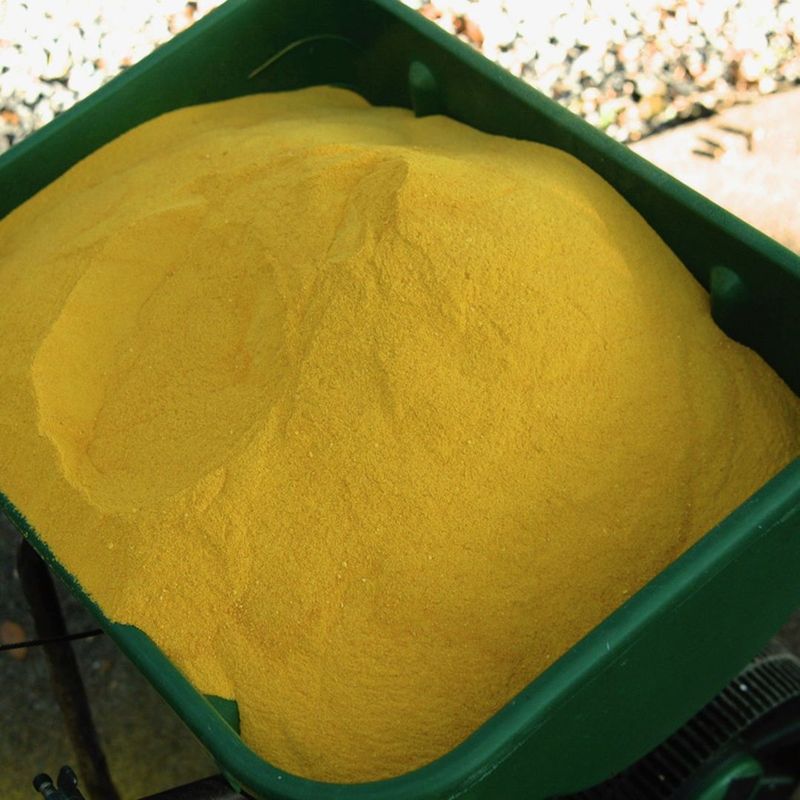That bag of cornmeal sitting in your pantry isn’t just for making cornbread and muffins. This kitchen staple has surprising uses in your garden that can help plants thrive naturally.
Cornmeal contains compounds that can fight fungi, attract beneficial insects, and nourish your soil without harsh chemicals.
1. Sprinkle as a Natural Fungicide
Cornmeal works wonders against common garden fungi that attack plants. When scattered around the base of plants, it helps prevent damping-off disease and other fungal problems that typically kill seedlings.
The natural compounds in cornmeal stimulate beneficial microorganisms in the soil that actually eat the harmful fungi. Apply a thin layer around plants early in the growing season for best results.
2. Create an Ant Deterrent Barrier
Ants hate walking through cornmeal! Create protective rings around vulnerable plants or along ant trails to discourage these pests from reaching your prized garden specimens.
The coarse texture irritates their bodies, and interestingly, while they might carry some cornmeal back to their colony, they can’t actually digest it properly. Reapply after rain or heavy watering for continuous protection.
3. Feed Beneficial Nematodes
Beneficial nematodes are microscopic worms that hunt and kill garden pests like grubs and cutworms. Cornmeal provides them with nutrients they need to multiply and thrive in your garden soil.
Mix a cup of cornmeal into your top layer of soil before releasing nematodes. The cornmeal acts like a welcome feast, encouraging them to stick around longer and protect your plants from underground attackers.
4. Prevent Weed Seeds from Sprouting
Cornmeal contains natural compounds that inhibit seed germination when applied at the right time. Sprinkle it in areas where weeds typically appear before they start growing in spring.
The gluten in cornmeal works as a pre-emergent herbicide, stopping weed seeds from developing roots. Remember this affects all seeds – so only use it in established beds, not where you’ve just planted new seeds!
5. Make Compost Tea Booster
Supercharge your compost tea by adding a handful of cornmeal to the brew. The cornmeal feeds beneficial microbes, making your compost tea even more powerful for plant health.
Simply add 1/4 cup of cornmeal to your compost tea bag or basket before brewing. The resulting liquid will contain extra nutrients and more active beneficial organisms. Your plants will respond with noticeably greener leaves and stronger growth.
6. Control Tomato Hornworms
Those massive green caterpillars that devour tomato plants have a surprising weakness – cornmeal! Hornworms are attracted to cornmeal but can’t digest it properly, leading to their demise.
Place small piles of cornmeal near the base of tomato plants. The hornworms will eat it, but since they can’t process it, it expands in their digestive system. This natural control method is safe for beneficial insects and your garden ecosystem.
7. Boost Soil Microbial Activity
Garden soil teems with microscopic life that helps plants thrive. Cornmeal serves as food for these beneficial microorganisms, dramatically increasing their populations and activity.
Work about 2 pounds of cornmeal per 100 square feet into your soil before planting. The carbohydrates feed fungi and bacteria that break down organic matter faster. This creates a more fertile environment where plants can access nutrients more easily.
8. Create Slug and Snail Traps
Slugs and snails can devastate tender seedlings overnight. Cornmeal offers a clever solution without harmful chemicals that might hurt pets or wildlife.
Place small piles of cornmeal in jar lids around your garden. Slugs and snails are attracted to it, but similar to hornworms, they can’t digest it properly. After consuming the cornmeal, it expands inside them, effectively eliminating these garden pests naturally.
9. Balance Nitrogen-Rich Compost
Compost piles sometimes get too nitrogen-heavy from too many green materials, resulting in smelly, slow decomposition. Cornmeal adds carbon to balance things out.
Mix a couple cups of cornmeal into a stinky compost pile and turn it thoroughly. The cornmeal provides the perfect carbon boost to help microbes break down nitrogen materials. Your compost will heat up properly and finish faster, without the unpleasant odor.
10. Feed Earthworms Naturally
Earthworms are garden superheroes, aerating soil and creating nutrient-rich castings. Cornmeal makes a perfect earthworm snack that encourages them to multiply in your garden beds.
Lightly work cornmeal into the top few inches of soil in established beds. The worms will come to feast on it, increasing their population. More worms mean better soil structure, improved drainage, and enhanced nutrient availability for your plants.
11. Make Organic Lawn Fertilizer
Your lawn can benefit from cornmeal too! It provides slow-release nutrients that feed grass gradually without the burning risk of chemical fertilizers.
Spread 20 pounds of cornmeal per 1,000 square feet of lawn using a broadcast spreader. Water thoroughly afterward to help it start breaking down. The cornmeal feeds soil microbes that improve soil health while providing mild fertilization to grass roots.
12. Attract Beneficial Insects
Gardens need pollinators and predatory insects to thrive. Cornmeal attracts many helpful insects that pollinate plants and hunt garden pests.
Sprinkle small amounts of cornmeal on flat stones or boards placed around the garden. Beneficial insects like ground beetles, lacewings, and ladybugs will be drawn to it. These garden allies will stick around to pollinate flowers and feast on aphids, mites, and other problem pests.
13. Correct Soil Acidification
Gardens that have become too acidic from pine needles, oak leaves, or acid rain can benefit from cornmeal’s slightly alkaline properties. It gently helps neutralize soil over time.
Work cornmeal into soil that tests below 6.0 pH for a gentle adjustment that won’t shock plants. Unlike harsh lime products, cornmeal changes pH gradually while improving soil structure. Plants that prefer neutral soil conditions will show improved vigor and production.
14. DON’T Use Near New Seeds
Never sprinkle cornmeal in areas where you’ve just planted seeds or plan to plant soon! The same properties that make cornmeal effective against weeds will prevent your desired seeds from sprouting.
The corn gluten in cornmeal naturally inhibits root formation during germination. Wait at least 4-6 weeks after applying cornmeal before planting seeds in that area. Established plants with developed root systems won’t be affected, but tiny emerging seedlings don’t stand a chance.
15. DON’T Apply During Wet Weather
Applying cornmeal during rainy periods or right before predicted storms wastes your time and resources. Cornmeal needs to stay dry initially to be effective for most garden applications.
Heavy rain washes away cornmeal before it can work properly against fungi or pests. When using cornmeal as a natural fungicide or pest deterrent, apply during dry weather with no rain in the forecast for at least 48 hours. This ensures it has time to work before getting washed away.
16. DON’T Confuse With Corn Gluten Meal
Regular cornmeal and corn gluten meal are different products with different strengths in the garden. Using regular cornmeal when you need corn gluten meal can lead to disappointing results.
Corn gluten meal is more concentrated and effective as a pre-emergent herbicide. Regular cornmeal works better for feeding beneficial organisms and as a mild soil amendment. Check product labels carefully – corn gluten meal typically costs more and explicitly states its higher gluten content.

